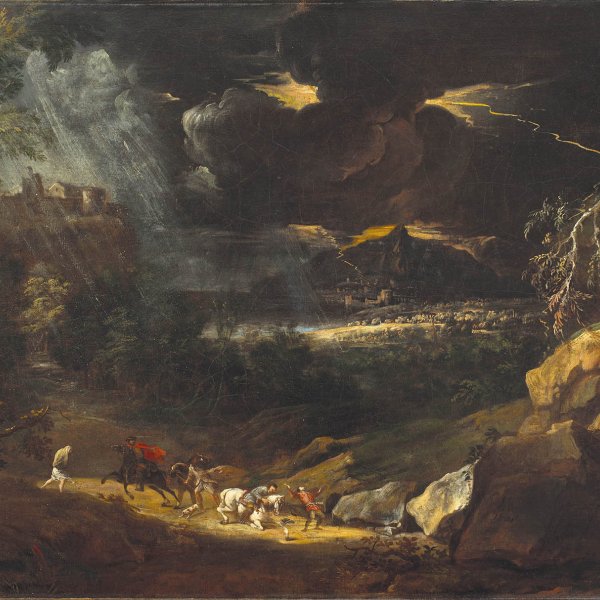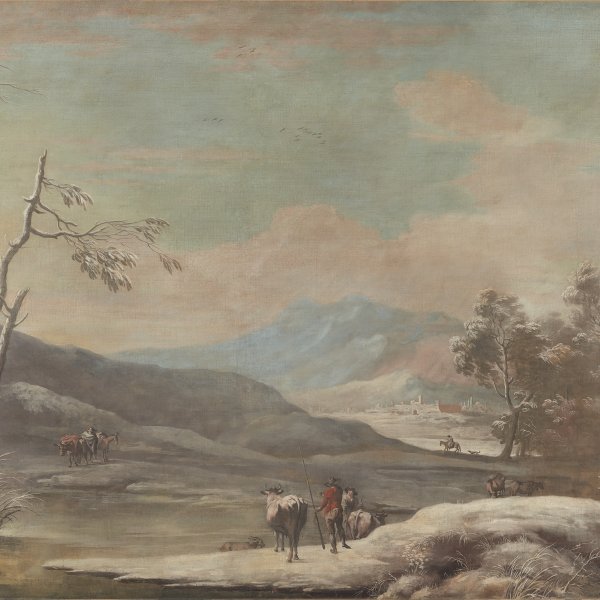Marco Ricci
Belluno, 1676-Venice, 1730
Marco Ricci was a painter, printmaker, and set designer. Nephew of Sebastiano Ricci, he probably first trained in his uncle’s studio in Venice and often assisted him on his projects. Marco Ricci was obliged to flee from Venice after he was involved in a murder, moving to Split where he remained for four years, during which time he continued his studies in the studio of a landscape painter. Around 1700 he was again in Venice and at this point began to work on set design. In 1705 he is documented as collaborating with Alessandro Magnasco whose style significantly influenced the young Ricci’s own, which became freer and more fluid.
In 1708 Ricci left for England in the company of Giovanni Antonio Pellegrini, invited by Charles Montagu, Duke of Manchester. During their trip both painters travelled through the Low Countries where Ricci became familiar with Dutch landscape painting. Once in England, Ricci principally worked as a set designer for operas and also painted fresco decorations for the residence of the Duke of Manchester in London, and at Castle Howard. In 1710 he left the capital but returned there in 1712 with his uncle Sebastiano Ricci. Both were back in Venice in 1716 and continued to work closely together.
Marco Ricci’s most original works are his landscape paintings whose themes include Mediterranean ports, pastoral scenes, woods with travellers, cultivated fields and winter views. The realism and simplicity of some of these compositions indicate a profound knowledge of Dutch and Flemish painting. Ricci’s work was crucial to the development of 18th-century Venetian landscape painting and among the artists whom he influenced were Canaletto, Michele Giovanni Marieschi, Francesco Guardi, Giuseppe Zaïs, and Francesco Zuccarelli.
In 1708 Ricci left for England in the company of Giovanni Antonio Pellegrini, invited by Charles Montagu, Duke of Manchester. During their trip both painters travelled through the Low Countries where Ricci became familiar with Dutch landscape painting. Once in England, Ricci principally worked as a set designer for operas and also painted fresco decorations for the residence of the Duke of Manchester in London, and at Castle Howard. In 1710 he left the capital but returned there in 1712 with his uncle Sebastiano Ricci. Both were back in Venice in 1716 and continued to work closely together.
Marco Ricci’s most original works are his landscape paintings whose themes include Mediterranean ports, pastoral scenes, woods with travellers, cultivated fields and winter views. The realism and simplicity of some of these compositions indicate a profound knowledge of Dutch and Flemish painting. Ricci’s work was crucial to the development of 18th-century Venetian landscape painting and among the artists whom he influenced were Canaletto, Michele Giovanni Marieschi, Francesco Guardi, Giuseppe Zaïs, and Francesco Zuccarelli.






